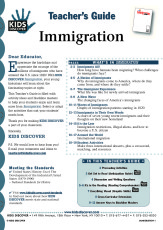Ask any teacher and they will tell you: the face of the classroom has changed. Today’s classrooms are bountiful with a diverse blend of students from many countries and cultures. They say that no two snowflakes are alike—well, the same goes for students. In the suburban school district where I work, we have children speaking over 75 different native languages.
In the decade between 1910 and 1920, 57% of students were immigrants. Back then, the analogy used to describe America was that of a “melting pot”—a reference to the way metals were mixed in order to create a stronger alloy, steel. Educators have learned a thing or two in the past 100 years, however — enough to know that we don’t want to melt and mold all of these diverse cultures into one homogeneous American citizen. Years of discrimination and the long struggle for civil rights have armed us with a stronger awareness and greater respect for the individual. Some now use a new analogy to describe Americans. They say that America is a “mixed salad,” and anyone who has ever enjoyed a chopped salad knows that the more varied the ingredients, the better tasting the salad.
Teachers with a diverse classroom have invaluable resources in our nation’s foundational documents. The Declaration of Independence, the Constitution, and our Bill of Rights are all embedded with fairness, tolerance and respect for individual freedoms – characteristics that are basic to any classroom.
Here are some ideas for celebrating diversity and bringing fairness, tolerance and respect into the classroom:
- No name calling, or even labeling. These are barriers that need to be erased whenever possible.
- Teachers should be proactive at group selection within the classroom to prevent the formation of cliques. It may be preferable to take this decision out of students’ hands altogether so that they get to know and accept each other. Ditto for sports teams in gym, and even the lunchroom. After all, eating together is one of the oldest ways to form a friendship.
- Celebrate diversity by posting a map of the world in your classroom and having each student place a sticker on the country where his or her family comes from. Every student should have a sticker — and those who aren’t sure where their family originates should find out!
- Assign students to tell the story of their family and cultural heritage. Choose whichever storytelling method you are currently working on—PowerPoint, narrative, speech. These stories will fascinate your students, provide real-life connections to social studies and offer opportunities to discuss cultural similarities and differences.
There are countless spectacular books about diversity to read to the class. Here are just a few:
Everybody Cooks Rice, by Norah Dooley
Wonder, by R.J.Palacio
Out of Mind , by Sharon Draper
Copper Sun, by Sharon Draper
I Hate English, by Ellen Levine and Steve Bjorknam
The Copper Lady, by Alice Rose and Leslie Bowna




